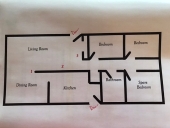
 6
6




 3
3




 6
6




Mike Bettis wrote:Now I am not going with that original architect design and am getting a cabin put up on my land and I want to revisit this fireplace/wood burning stove topic. I have pondered installing an RMH but my thoughts are if a masonry fireplace is too much for my climate wouldn't a RMH also be? And on further thought are there any techniques to retain more heat from a wood burning stove? I see a post on here about creating a mass behind it but is there anything that can be done with the chimney of it, as far as routing it back down or through mass of some type? Maybe this is a more moderate approach to storing heat? Personally I'm just not sure I can go with a RMH, I love watching a fire dance.
 9
9




 6
6




Glenn Herbert wrote:Routing a wood stove exhaust through mass will necessarily cool it and cause serious creosote condensation, so I would definitely not advise that.
 5
5





 7
7




 3
3





 6
6




Iterations are fine, we don't have to be perfect
My 2nd Location:Florida HardinessZone:10 AHS:10 GDD:8500 Rainfall:2in/mth winter, 8in/mth summer, Soil:Sand pH8 Flat
 3
3




Since you are at the design phase choose to build efficiency into the house over and above the bare minimum and any of the mentioned options can do the job. In my climate here that meant a smaller then average footprint, triple pane windows, R72 in the attic and R28 in the ICF walls. We designed our house to respond to where I think utility prices will be a generation from now. The cost difference is negligible while you are building and expensive to think of later. I find too many people worry about how to heat their place without giving enough thought to minimizing the amount of heat they need. To get off my soap box for a modern efficient woodstove extra runs of chimney are not worth it as it adds bends which collect soot and slow down the draft. Usually you are better to add air movement near the stove to refresh the bubble of cooler air around it. All too often Stoves form a bubble of hot insulating air around them which lowers efficiency. Blown hot air towards existing mass like slabs, drywall, ceramics, can give you the same effect as mass near the stove and be evenly distributed. Different rules for RMHs' of course ill let another comment there.Mike Bettis wrote:Is there any effectiveness at having a longer run of the stove pipe while on the interior? Like along the roof pitch for example? Or is this not effective in anyway?
 3
3




Mike Bettis wrote:Is there any effectiveness at having a longer run of the stove pipe while on the interior? Like along the roof pitch for example? Or is this not effective in anyway?

 3
3




Be joyful, though you have considered all the facts. ~Wendell Berry
 2
2





|
It sure was nice of your sister to lend us her car. Let's show our appreciation by sharing this tiny ad:
The new permaculture playing cards kickstarter is now live!
https://www.kickstarter.com/projects/paulwheaton/garden-cards
|





